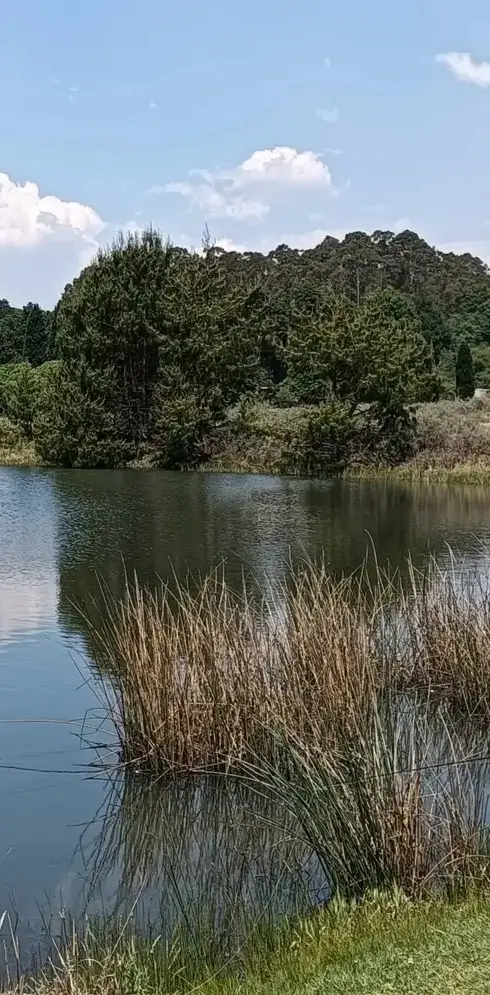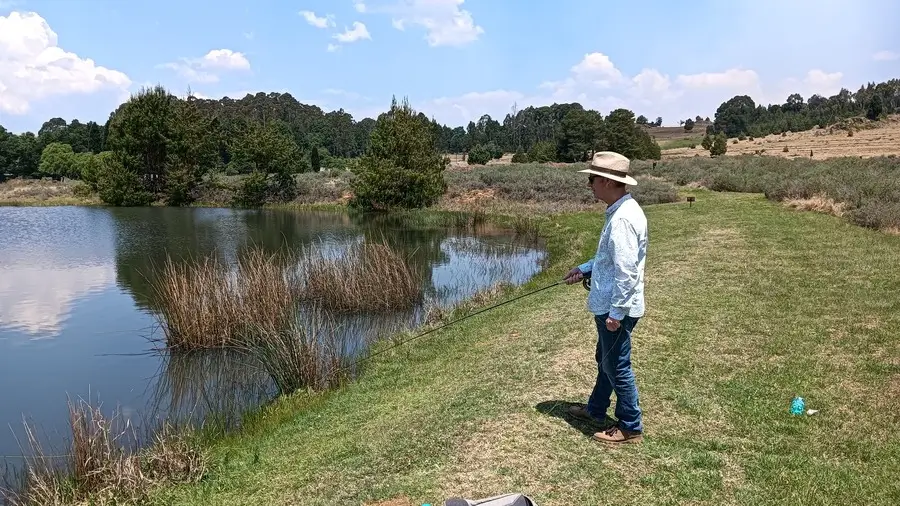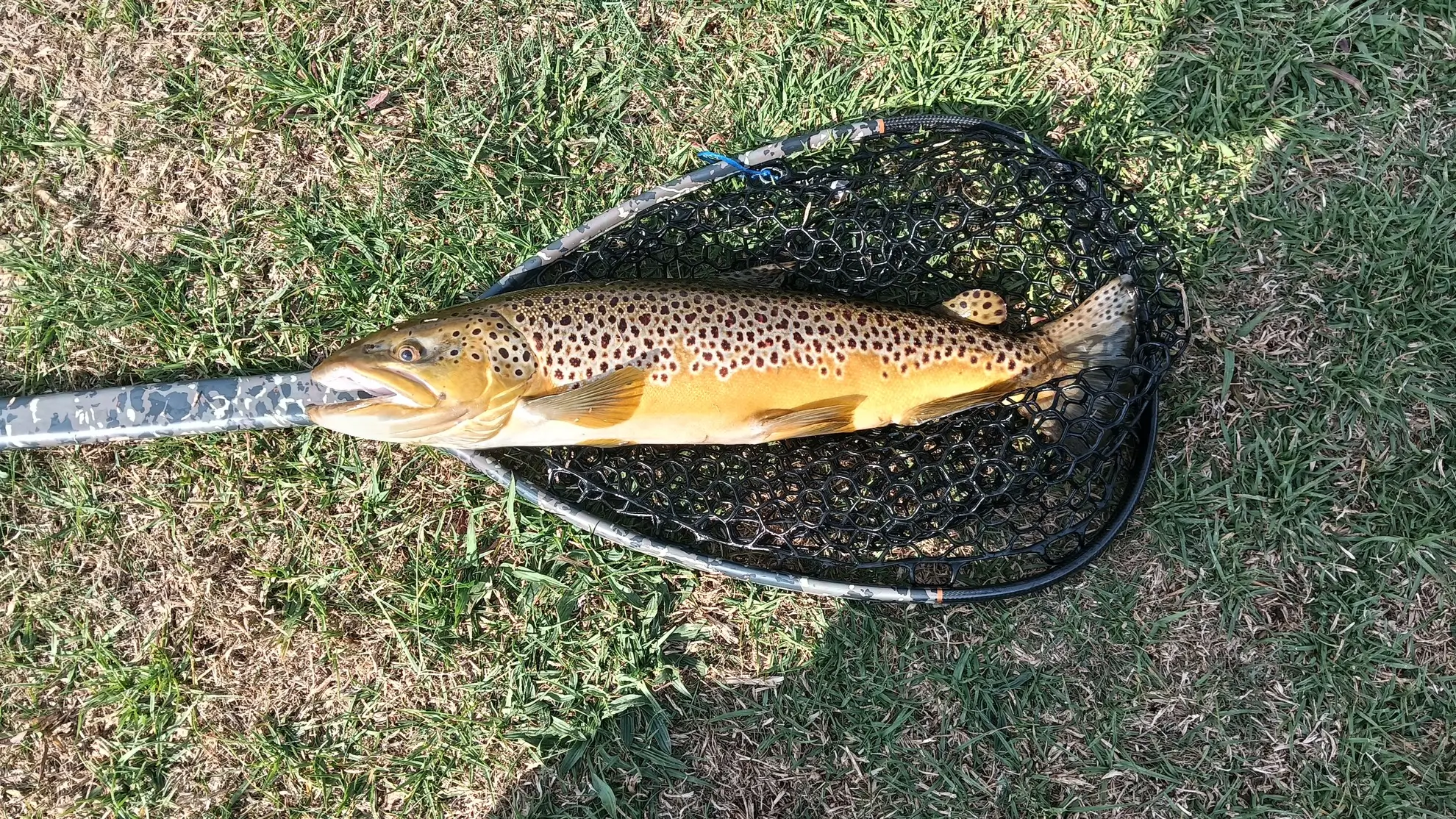“Hands down the best guiding experience I’ve had in Dullstroom. Calm, professional, and somehow always one step ahead of the fish.”
Jaco
Full Day • Laverpa
Trip date: April 2025

Dullstroom Fly Fishing Guide · Laverpa & Valley of the Rainbow
Fish premier Dullstroom stillwaters like Laverpa and Valley of the Rainbow with a local fly fishing guide. We organise access, flies, tactics and venue logistics – you just arrive, learn, and fish for rainbow and brown trout.
Max 2 anglers per guide. Venue permits / rod fees may apply at private waters like Laverpa and Rainbow Valley. WhatsApp us if you’d like to fish your own venue or lodge dams.
Why Fish With Immersive Angling?
Whether it’s your first time with a fly rod or you’re chasing technical dry-fly sight fishing, we focus on small groups, clear tuition and relaxed, enjoyable days on the water.
Fish handpicked venues like Laverpa and Valley of the Rainbow with arranged access, honest advice and a plan for the day based on season, weather and water clarity.
Learn practical skills that actually catch fish: leader & tippet setups, presentation, spotting fish, reading the wind and when to switch from dry to emergers, nymphs or small streamers.
Max 2 anglers per guide for focused attention and unhurried coaching. Perfect for beginners, couples, friends and parents introducing kids to Dullstroom trout fishing.
Want to fish your lodge dams or a different venue? Get in touch and we’ll plan a custom Dullstroom day.
Where do we fish?
Private stillwaters near Dullstroom: Laverpa and Valley of the Rainbow.
What species?
Rainbow & brown trout in clear, high-altitude dams.
Best times?
Spring (Sep–Nov) & Autumn (Mar–May) — stable weather & dry-fly windows.
Flies that work?
Hoppers, Adams/Purple Haze, Klinkhåmer, CDC emergers, Elk Hair Caddis.
Want the full venue breakdown? See the best trout waters in Dullstroom .
Dec 2025 – Mar 2026 • Guided Booking Giveaway
Make a guided booking between 1 Dec 2025 and 31 Mar 2026 and stand a chance to win a 2-night weekend stay for up to 4 people.
Prize covers accommodation only.
Winner announced 3 April 2026.
Stay scheduled for end of April (Fri–Sun).
* Venue day permits may apply at private waters like Laverpa and Valley of the Rainbow.
Our Laverpa fly fishing trips focus on clear stillwaters with sight-fishing along weedlines, careful dry-fly presentations and short, effective dry–dropper setups. We arrange access, help you choose the right flies for the day and keep things relaxed so you can enjoy the water.
See the dedicated Laverpa guide page for rates, what’s included, and sample trip plans.
Hand-picked stillwaters and estate water we know well, so you don’t have to guess where to start.
Dullstroom · Mpumalanga
Classic stillwaters with frequent sight-fishing. Fish dry/dropper along weedlines and keep a slim nymph or CDC emerger ready for cruising trout. Ideal for beginners and refined dry-fly days alike.
Near Dullstroom · Mpumalanga
A trout estate with multiple dams and a seasonal river section. Perfect for mixed groups, couples’ weekends and anglers who want water, scenery and birdlife in one place.
Real days on the water — conditions, flies, and smiles.



From first trout to technical dry-fly missions, anglers trust Immersive Angling to slow things down, teach with patience, and make every drift count.
“Hands down the best guiding experience I’ve had in Dullstroom. Calm, professional, and somehow always one step ahead of the fish.”
Jaco
Full Day • Laverpa
Trip date: April 2025
“We arrived not knowing how to hold a fly rod and left actually understanding what we were doing. Shayne broke everything down simply, never made us feel silly for asking questions, and celebrated every small win with us. Perfect intro to fly fishing.”
Gavin
Full Day • Laverpa
Trip date: April 2025
“Technical coaching on casting, presentation and reading water. I left with more confidence and a notebook full of small details that make a big difference.”
Ruan
One-on-one guiding • Skill focused
Trip date: September 2025
“We agreed up front that we’d hunt dry-fly eats, even if it meant fewer fish. Shayne respected that completely. We waited for windows, watched for subtle rises and made every shot count. When the first brown sipped the fly in the film… that was worth the whole trip.”
James P
One-on-one guiding • Skill focused
Trip date: June 2025
“Coming from Joburg, I wanted to maximise a short weekend. Shayne handled venue bookings, timing and all the logistics. I literally just had to show up, rig up and fish. Zero stress, lots of laughs and some really solid trout to hand.”
Steve
Full Day • Laverpa
Trip date: November 2024
“I was honestly nervous about booking a guide because I didn’t want to look clueless. Within ten minutes those nerves were gone. Shayne explained things in normal language, never rushed me and celebrated small improvements. By the end of the day I was casting, mending and actually feeling like an angler.”
Michael
One-on-one guiding • Skill focused
Trip date: October 2024
Your feedback truly helps our small guiding business grow. After your trip, please take a moment to send us a quick review.
Send Your FeedbackNew • Real-time Dullstroom Updates
Get short, useful updates on Dullstroom stillwaters: water clarity, temps, flies that are working, open guiding dates, and Immersive Angling news — straight from Shayne, your guide.
No group spam, no public chatting. Just one-way updates you can mute or leave at any time.
Spring (Sep–Nov) and autumn (Mar–May) are most reliable for dry-fly windows with stable temps.
Hoppers, Parachute Adams, Klinkhåmer, CDC Emergers, and Elk Hair Caddis cover most days.
Guides secure access to prime waters, match flies to conditions, and speed up the learning curve.
Full-Day from R3,500 (excludes venue permits where applicable). See rates for details.
Meet Your Guide
I’m Shayne, the guide behind Immersive Angling. My focus is on calm, one-on-one coaching, reading stillwaters properly, and helping you slow things down enough to actually enjoy the day — whether it’s your first trout or a more technical dry-fly mission.
From Johannesburg weekend trips to carefully timed Dullstroom sessions, I handle the logistics so you can focus on clean drifts, good shots and small improvements that add up.
Ready to Fish Dullstroom?
Most weekend trips are booked 7–10 days in advance, especially in spring and autumn. If you have specific dates in mind, it’s worth reserving your spot early – we keep groups small and focus on calm, patient instruction.
Ideal for Johannesburg weekenders, first-time fly anglers and dry-fly addicts who want to make every session count.
We usually reply within 24 hours, sooner if we’re not on the water.